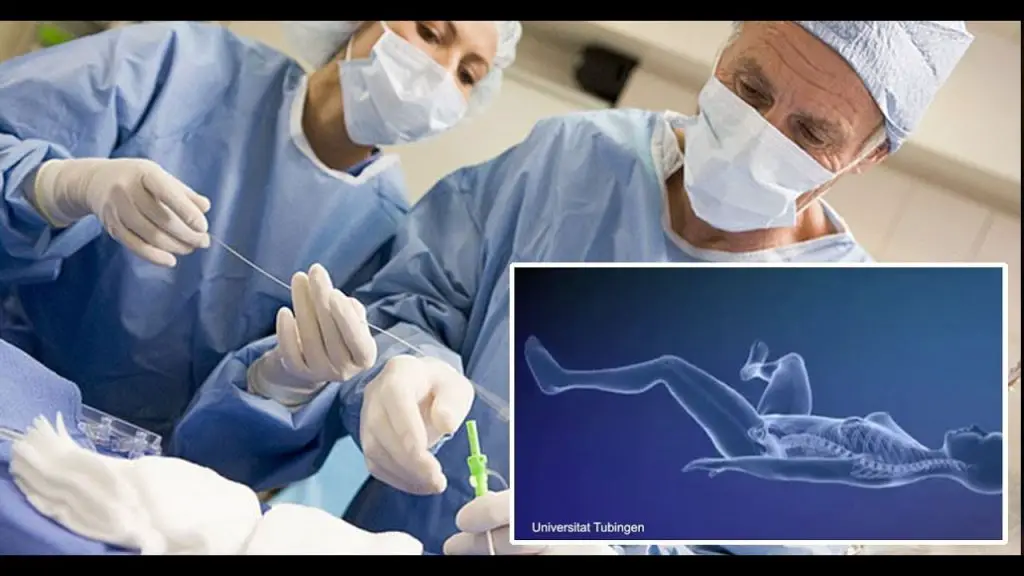Transgender surgery plays a significant role in the process of gender affirmation, allowing individuals to align their physical bodies with their gender identity. It involves a series of procedures tailored to the specific needs of both female-to-male and male-to-female transitions.
For those transitioning from female to male, surgical options include chest restructuring, removal of the uterus, and the possibility of metoidioplasty or phalloplasty to create a new penis. These procedures help individuals achieve a more masculine appearance and enhance their overall well-being.
Conversely, individuals transitioning from male to female can undergo surgeries such as removing the testicles and penis, creating a vagina, and even considering breast augmentation and facial feminization surgery. These procedures contribute to the journey of self-discovery and help individuals align their physical features with their true selves.
Hormone therapy is an essential aspect of transgender surgery, assisting individuals in achieving the desired changes in their bodies. It helps develop secondary sexual characteristics associated with their gender identity and aids in the overall transition process.
Recovery time can vary depending on the type of surgery and the individual’s overall health. Understanding the stages of recovery and following the medical professional’s guidance is crucial for a successful outcome.
While transgender surgery has proven to be an empowering process for many individuals, it is important to acknowledge the potential complications and challenges that may arise. However, studies have shown that overall satisfaction rates with transgender surgeries are high, and regrets after the procedures are rare.
Cost is an important consideration for individuals seeking transgender surgery. The expenses can range from $7,000 to over $50,000, depending on the specific procedures and any additional medical care required. Fortunately, insurance coverage for transgender surgeries is becoming more accessible, providing financial support for those in need.
It is crucial to recognize the unique challenges that individuals may face during their transition journey. Support from healthcare professionals, therapists, and a strong social support system can significantly contribute to a smoother transition and overall well-being.
In conclusion, understanding transgender surgery is essential in acknowledging its significance in the process of gender affirmation. With the right medical guidance, support, and care, individuals can embark on a journey to align their physical bodies with their true selves, embracing their authentic identity.
Types of Transgender Surgeries for Female-to-Male Transitions
For individuals transitioning from female to male, transgender surgeries encompass various procedures aimed at reshaping their physical appearance to match their gender identity. These surgeries can greatly alleviate gender dysphoria and help individuals feel more comfortable in their bodies.
One common procedure in female-to-male transitions is chest restructuring. This involves removing breast tissue and reshaping the chest to create a more masculine appearance. It can involve a mastectomy or the use of chest masculinization surgery techniques to create a flatter and more masculine chest contour.
Another procedure that may be considered is the removal of the uterus. This is typically done through a hysterectomy, which involves the removal of the uterus and sometimes the cervix. This procedure is done to align the individual’s physical body with their male gender identity.

In addition to chest restructuring and removal of the uterus, there are also options for creating a new penis in female-to-male transgender surgeries. Metoidioplasty and phalloplasty are two commonly chosen procedures. Metoidioplasty involves releasing the clitoral hood to allow the clitoris to extend and create a small penis. Phalloplasty, on the other hand, uses grafts from other parts of the body to create a more fully formed penis. The choice between these procedures depends on individual preferences, goals, and medical considerations.
Table: Comparison of Female-to-Male Transgender Surgeries
| Procedure | Description |
|---|---|
| Chest Restructuring | Removal of breast tissue and reshaping the chest for a flatter, more masculine appearance. |
| Removal of Uterus | Removal of the uterus and sometimes the cervix to align the individual’s physical body with their male gender identity. |
| Metoidioplasty | Releasing the clitoral hood to allow the clitoris to extend and create a small penis. |
| Phalloplasty | Using grafts from other parts of the body to create a more fully formed penis. |
It is important for individuals considering female-to-male transgender surgeries to consult with experienced professionals who specialize in transgender healthcare. They can provide guidance, information, and support throughout the process, helping individuals make informed decisions about the best course of action for their transition journey.
Types of Transgender Surgeries for Male-to-Female Transitions
Male-to-female transgender surgeries involve a series of procedures designed to help individuals achieve their desired feminine appearance. These surgeries typically include the removal of testicles and penis, creation of a new vagina, and may also include breast augmentation and facial feminization surgery.
The removal of the testicles, known as an orchiectomy, is often the first step in the male-to-female transition. This procedure helps to reduce testosterone levels and stops the production of sperm. The next step is the removal of the penis, which is called penectomy. Following these procedures, the surgeon will create a vagina through a process called vaginoplasty. This involves using existing tissue or grafts to construct the vaginal canal.
Breast augmentation is another common procedure in male-to-female transitions. This surgery involves the insertion of breast implants to create a more feminine chest contour. Facial feminization surgery is also an option for those looking to feminize their facial features. This may include procedures such as rhinoplasty, chin contouring, and brow lift to create softer and more feminine facial characteristics.
It’s important to note that while these procedures can help individuals in their transition, each person’s journey is unique. Hormone therapy, combined with these surgeries, plays a crucial role in achieving the desired results. Recovery times vary depending on the individual and the specific surgeries undergone. Complications can arise, as with any surgical procedure, but overall satisfaction rates are high among those who choose to undergo male-to-female transgender surgeries.
| Surgery | Description |
|---|---|
| Orchiectomy | Removal of the testicles to reduce testosterone levels |
| Penectomy | Removal of the penis |
| Vaginoplasty | Creation of a new vagina using existing tissue or grafts |
| Breast Augmentation | Insertion of breast implants to create a more feminine chest |
| Facial Feminization Surgery | Procedures to feminize facial features, such as rhinoplasty, chin contouring, and brow lift |

“Undergoing male-to-female transgender surgeries can be a life-changing decision for individuals seeking to align their physical appearance with their gender identity. It’s important for individuals to work closely with experienced surgeons and healthcare professionals to ensure the best possible outcomes.”
Summary
Male-to-female transgender surgeries involve a series of procedures to help individuals achieve a more feminine appearance. These may include the removal of testicles and penis, creation of a new vagina, breast augmentation, and facial feminization surgery. Hormone therapy is crucial in the transition process, and recovery times vary. It’s important to consider the potential risks and challenges that individuals may face during their journey. While costs may range from $7,000 to over $50,000, insurance coverage is becoming more available. Overall, these surgeries can have a positive impact on individuals’ lives, helping them align their physical appearance with their gender identity.
Hormone Therapy and Recovery in Transgender Surgery
Hormone therapy plays a crucial role in the overall transition process, aiding in the development of desired secondary sexual characteristics and preparing the body for surgical procedures. For individuals undergoing male-to-female transitions, hormone therapy typically involves the use of estrogen to promote breast development, reduce body hair growth, and soften the skin. The suppression of testosterone is also important in order to achieve a more feminine appearance.
Conversely, female-to-male hormone therapy involves the administration of testosterone to stimulate the growth of facial and body hair, deepen the voice, increase muscle mass, and promote other masculine characteristics. Hormone therapy is an ongoing process, with regular monitoring of hormone levels and adjustments to dosage to ensure optimal results.
Recovery time after transgender surgery can vary depending on the specific procedures performed and the individual’s healing capacity. It is important to follow post-surgical guidelines provided by the healthcare team, which may include wearing compression garments, taking pain medication, and attending follow-up appointments. Adhering to these recommendations can help minimize complications and promote a successful recovery.
Transgender Surgery Stages
- Pre-surgical phase: This stage involves thorough consultations with healthcare professionals, psychological evaluations, and discussions with the surgical team to determine the best course of action for the individual’s specific transition goals.
- Surgical phase: The surgical phase includes the actual procedures such as chest restructuring, genital reconstruction, or facial feminization. The length and complexity of the surgery will impact the recovery time and healing process.
- Post-surgical phase: After the surgery, the body needs time to heal and adjust. This phase often involves managing pain, swelling, and potential complications, as well as attending follow-up appointments to monitor progress and address any concerns.
Overall, transgender surgery can be a life-changing process that aligns an individual’s physical body with their gender identity. While complications may occur, studies show that satisfaction rates are generally high among individuals who undergo these procedures. It is important to consult with experienced healthcare professionals and fully understand the risks, benefits, and costs associated with transgender surgery.

| Surgery Type | Average Cost |
|---|---|
| Female-to-Male | $7,000 – $50,000 |
| Male-to-Female | $15,000 – $100,000 |
Costs, Insurance, and Considerations in Transgender Surgery
While transgender surgery offers a life-changing opportunity, it is essential to consider the financial implications, insurance coverage, and possible challenges individuals may encounter. The cost of transgender surgery can vary significantly depending on the specific procedures involved, with prices ranging from $7,000 to well over $50,000.
Insurance coverage for transgender surgeries is becoming more available as recognition of the medical necessity grows. However, it is important to carefully review your insurance policy to understand what procedures are covered and what requirements need to be met.
Additionally, it is crucial to recognize that individuals may face challenges during their transition journey. These challenges can include societal stigma, discrimination, and emotional difficulties. It is important to have a support system in place and seek professional guidance to navigate these challenges successfully.
While the decision to undergo transgender surgery is deeply personal, it is crucial to make an informed choice. Researching the different surgery options and techniques available is essential, as well as consulting with medical professionals who specialize in transgender healthcare. By taking these factors into consideration, individuals can embark on their surgical journey with confidence and increase their chances of achieving a positive and fulfilling outcome.
FAQ
What is transgender surgery?
Transgender surgery, also known as gender-affirming surgery or gender confirmation surgery, refers to the medical procedures that help individuals transition from their assigned sex at birth to their identified gender. It involves various surgical procedures to align the physical appearance with the individual’s gender identity.
What are the different types of surgeries for female-to-male transitions?
Female-to-male surgeries may include chest restructuring, removal of the uterus, and metoidioplasty or phalloplasty to create a new penis. These procedures help individuals achieve a more masculine appearance and alleviate gender dysphoria.
What are the different types of surgeries for male-to-female transitions?
Male-to-female surgeries typically involve removing the testicles and penis, creating a vagina, and may include breast augmentation and facial feminization surgery. These procedures aim to create feminine features and enhance the individual’s feminine identity.
What is the role of hormone therapy in transgender surgery?
Hormone therapy is a crucial part of transgender surgery. It involves the use of hormones, such as testosterone for female-to-male transitions and estrogen for male-to-female transitions, to induce the development of secondary sexual characteristics associated with the desired gender. It helps individuals achieve the physical changes they desire and contributes to their overall well-being.
How long is the recovery time for transgender surgeries?
The recovery time for transgender surgeries varies depending on the individual and the specific procedures involved. Generally, individuals can expect a few weeks to several months of recovery time. It is important to follow the post-operative care instructions provided by the medical professionals to ensure proper healing and minimize complications.
What are the potential complications of transgender surgery?
Like any surgical procedure, transgender surgeries carry potential risks and complications, such as infection, bleeding, scarring, and adverse reactions to anesthesia. However, with proper medical care and expertise, the occurrence of complications is generally low. It is crucial to discuss potential risks and complications with the healthcare team before undergoing surgery.
What is the cost of transgender surgery?
The cost of transgender surgery can vary widely depending on factors such as the type of procedures involved, the surgeon’s expertise, geographical location, and additional expenses like hospital fees and follow-up care. The cost can range from $7,000 to over $50,000. It is advisable to consult with healthcare providers and insurance companies to understand the financial implications and explore available coverage options.
Is transgender surgery covered by insurance?
Insurance coverage for transgender surgery has become more available in recent years. However, coverage and reimbursement vary depending on the insurance provider, specific policies, and local regulations. It is important to review insurance plans and consult with insurance representatives to understand the coverage options and requirements for transgender surgeries.
Do individuals regret undergoing transgender surgery?
Regret after transgender surgery is rare. Studies have shown high levels of satisfaction among individuals who have undergone gender-affirming surgeries. However, it is essential to recognize that the transitioning process is complex, and individuals may face challenges in their personal, social, and emotional journeys. Mental health support, community resources, and a strong support network play an important role in ensuring a positive experience and overall well-being.